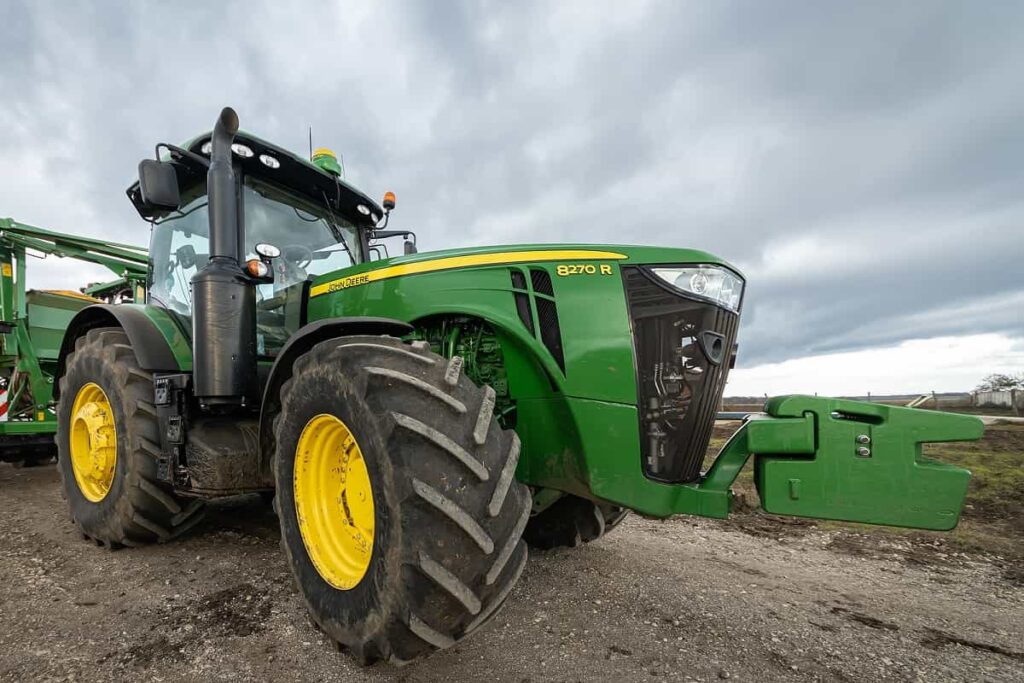5 Startups Improving Crop Yield Forecasting
Table of contents

It’s rare to find someone truly fascinated by the study of finance. Most people suffer through dreadfully boring topics like “the efficient frontier” or the “capital asset pricing model” because they want to make large amounts of money telling more successful people what to do with their money. One often debated statement you’ll come across in the finance world is “volatility equals risk.” You can also describe volatility as uncertainty, and there are some industries where we might want to have more certainty than others – like farming.
The global population has doubled since the 1960s, with the number now exceeding 7.5 billion – 36% of whom live in India or China. As a result, society is needing to become increasingly creative about how we generate enough food for all these mouths. This is where crop yield forecasting methods can be used to predict what happens throughout the food supply chain so we can avoid severe food shortages, reduce (or even eliminate) waste in food production, and – most importantly – make farming a more profitable occupation so that more people want to grow food. According to the experts over at AgFunderNews, there is “a shift from farming-to-maximize-yield to farming-to-maximize-profit by looking at farming operations, not just precision agriculture.”
Why Crop Yield Forecasting?
Here’s an interesting factoid which should be intuitive, but you may have never thought of. Agronomists believe that the minimum crop yield requirement to sustain mankind is “1 to 3” which means we need at least three grains harvested for each grain seeded. One seed is allocated for the next planting season, and anything over that is for consumption or to give livestock which can act as farming equipment to increase output. A wheat plant typically has about 50 kernels, so this hasn’t been much of a problem. What has been a problem is that farming has become a much less profitable business which makes it less appealing to engage in.
One way to increase profits is to reduce uncertainty by using technology to predict crop yields months before the actual harvest season. This involves feeding large amounts of big farming data to predictive analytics algorithms that get better as time goes on. Here’s a sample list of five startups working to improve crop yield forecasting for farmers.
Estimating Crop Yields
Founded in 2016, Wisconsin startup Agrograph has taken in $500,000 in funding so far to develop software that merges satellite imagery with field data. The result is the “holy grail” of predictive agriculture which uses machine learning algorithms to estimate crop yields at the field level. According to its founders, Agrograph is the only company with the capacity to provide predictions on individual fields and the data they use – aside from the satellite imagery – comes directly from growers and third-party agencies such as crop insurers and lenders.
Interestingly, Agrograph does not market its agtech software to farmers, but instead focuses on selling their solution to third-parties such as crop insurers and lenders, grain distributors, and even other agtech firms that need these data inputs for their own solutions.

The end result is a platform that can provide field-level yield predictions for every field, in every county across the United States, from planting to harvest with support for up to five different crop types. Every year that passes is another years’ worth of historical data which means that eventually all this big data can be sold as “alternative data” to hedge funds that dabble in commodities trading.
Estimating Orchard Yields
While looking at fields using satellite images may work for some crops, in orchards it’s more difficult considering that tree leaves are covering everything from sight. Traditionally, growers have tried to predict yield by sampling – looking at a small number of trees in the orchard and extrapolating that number out. This method results in 30% to 40% inaccurate estimations. Now, there’s a better way to go about fruit yield estimation. Founded in 2016, Israel startup FruitSpec has taken in $700,000 in funding so far to develop a technology that combines hyperspectral imaging with computer vision for crop yield forecasting. (Hyperspectral cameras use many narrow bands to create images that provide details unavailable to the naked eye, something we saw used before by Swiss agtech startup Gamaya).
Contracts in the fruit market are made about five months before harvest, and the ability to accurately forecast yield results in savings that range from $800 to $2000 per hectare (a hectare is about 2.5 acres.) FruitSpec’s technology can provide yield estimates at the “green fruit phase” which is about five months before harvest – right when accurate estimates are needed. They’re able to distinguish between green fruits and green leaves using a “special sensor” and then count the fruit using computer vision algorithms.
The end result is a number of reports that help growers more accurately predict yield with only 10% inaccurate estimations as opposed to 30 to 40%. They’re also able to estimate fruit size across various grades which can significantly impact the amount a grower can receive for their fruit.
Pilots are taking place around the globe and a commercial version is expected by the end of this year. Implementation simply involves attaching sensor pods on both sides of a tractor as it traverses the orchard’s rows doing tractor stuff. In addition to farmers, FruitSpec’s target market includes packing houses and juice manufacturing clients as the industry becomes more connected throughout the entire value chain.
Putting the Green in Greenhouses
Estimating yields can also come in handy for indoor growers. Founded in 2015, Canadian startup Motorleaf has developed a technology that can “reduce error in harvest forecasting by 50% to 70% from the start,” a number that just becomes even more accurate with time. (In our article on Investing in Marijuana Growing Technologies, we noted how German lighting manufacturer Osram (OSR:GR) has taken a stake in Motorleaf.) Accurate yield forecasts are important for greenhouse growers who often pre-sell their crops. Motorleaf has developed their own sensors but can also integrate their solution with existing hardware that might be found in large commercial greenhouses.
Ultimately, Motorleaf is a software company whose clients will realize a 2X to 3X return on their investment using the technology. As they continue to collect all this big greenhouse data, they’re also able to make actionable recommendations to greenhouse growers that help increase yields as well.
Goose Berries and Bag Rats
Those endearing Chinese have a fun way of naming things that makes a whole lot of sense. The raccoon becomes a “wash bear,” the owl becomes a “cat head eagle,” a kangaroo becomes a “bag rat,” and the delicious egg-shaped kiwifruit becomes a “goose berry.” Founded in 2016, New Zealand startup Logiclabs has taken in an undisclosed amount of funding so far to develop crop yield forecasting software called Logiclabs Crop Counter that helps with orchard management for gooseberries, a fruit that’s actually grown on vines.

Logiclabs Crop Counter is designed for kiwifruit growers who conduct winter bud, flower and fruit counts during the season. The app allows for easy data collection in the field and intuitive real-time display of your orchard information. Sometimes, even a simple software solution can address growers’ pain points, and one can be sure that all the data being collected will soon be matched to other big data sets that can then be used to provide predictive analytics.
In Vino Veritas

Credit: VinsightVinsight charges farmers for every acre analyzed while processors and government agencies pay for access to the market data and software. From the grape and almond industry in California, they’re now looking to expand into walnuts, pistachios, strawberries, hops and the rest of the world.
Conclusion
Four of the five solutions we’ve discussed involve premium crops which could mean investors see this as low hanging fruit. Trees and vines don’t need to be planted every year, they’re always there, which represents a fixed baseline to work from. When you start to monitor inputs like weather, fertilizers, sprays, and water applications, you can then get better and better estimates as every year goes by. Reducing uncertainty by forecasting crop yields is useful for stakeholders throughout the entire farming supply chain. Think about how useful such information might be for a large restaurant chain when it comes to menu planning and pricing. Soon, we may see restaurants with dynamic menu pricing that reflects what’s actually happening in the agriculture supply chain.
Sign up to our newsletter to get more of our great research delivered straight to your inbox!
Nanalyze Weekly includes useful insights written by our team of underpaid MBAs, research on new disruptive technology stocks flying under the radar, and summaries of our recent research. Always 100% free.

















